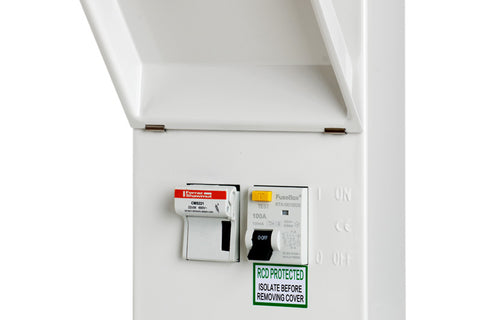Amendment 2 Wiring Changes - 2022
Amendment 2 18th Edition Wiring Changes
Amendment 2 of the 18th Edition IET Wiring Regulations (BS 7671:2018) were announced at the end of March 2022. The previous amendments (BS7671:2018+A1:2020) will be withdrawn at the end of September 2022. In this article we will look at the changes in these regulations.
Section 443 - Two significant changes are:
- The removal of the risk assessment - This will mean that the installation of surge protection devices can no longer be decided via a calculation.
- The removal of the special dispensation for single dwellings. They are now to be considered along with all other electrical installations.
Regulation 443.4.1
Protection against transient overvoltages shall be provided where the consequence caused by overvoltage could:
- Result in serious injury to, or loss of human life, or
- Result in failure of a safety service, as defined in part 2, or
- Result in significant financial loss or data loss
For all other cases SPDs shall be fitted to protect against transient overvoltages, unless the owner of the installation declines such protection and wishes to accept the risk of damage to both wiring and equipment as tolerable.
The requirement to install SPDs where the consequences could result in serious injury to, or loss of human life is the same as previously stated in amendment 1. Where we see a big shift, is in indent two, which requires an SPD to be installed where the consequences could result in the failure of a safety service as defined in part 2.
BS 7671
BS 7671 defines safety services as: “An electrical system for electrical equipment provided to protect or warn persons in the event of a hazard, or essential to their evacuation from a location. This will mean that any distribution board supplying electrical equipment that would fall in to the definition of a safety service, as described above, will require an SPD. Therefore, now that domestic installations are not exempt from these requirements, a smoke alarm that is supplied from a consumer unit, rather than a battery, must be protected by an SPD.
Surge Protection
Indent three is similar to the previous requirement where an SPD should be installed where commercial or industrial activity could be interrupted, the requirement now is that an SPD shall be provided where the consequence caused by overvoltage could result in significant financial or data loss. This leads on to the final requirements of the regulation
The basic position of section 443 is now that SPDs shall be installed. In practical terms, most installations will have distribution boards that require surge protection due to the indents above, so it would only be distribution boards that did not require surge protection, as no circuits outlined in regulation 443.4.1 were present. Then a discussion is encouraged between the electrical designer and the client to ensure that no unacceptable losses occur from overvoltage, while also considering the requirements to protect against switching overvoltages from regulation 443.4.2.
Regulation 443.4.2. - Protection against overvoltages shall be considered in the case of equipment likely to produce switching overvoltages or disturbances exceeding the applicable rated impulse voltage of equipment according to Table 443.2, e.g., where inductive or capacitive equipment, such as motors, transformers, capacitor banks, storage units or high current loads are installed.
Section 443 details where surge protection devices need to be installed, however, what is not clear is the type of device required. Generally, type 2 SPDs will be used for most installations but type 1 devices will be needed in certain circumstances:

For all other circumstances, a type 2 device will be sufficient to provide adequate protection for distribution boards. Where protection against overvoltages is required for specific equipment, a type 3 device may be used to provide protection.
Section 712
Regulation 712.443.101 - Where protection against transient overvoltage is required by section 443, such protection shall also be applied to the DC side of the PV installation. When the inverter incorporates an SPD, it is only considered as fulfilling the SPD requirement if the manufacturer specifies its use for the DC side of the PV installation, otherwise, it will need an external SPD. Varistors included in the inverter are not considered an SPD.
This will mean that if the electrical installation requires surge protection to be fitted to comply with section 443, as discussed above, SPDs would now also need to be installed on the DC side of the installation to protect both the PV panels and the inverter. Surge protection devices designed for the use on the DC side of a PV system are designed to a different standard than SPDs used in low voltage installations. Although they are still described by using type 1 and type 2, as explained above, where type 1 devices are to protect against direct lightning, it is extremely important that only devices designed for use on the DC side of a PV installation are used. All SPD’s installed on the DC side of a PV installation shall comply with BS EN 61643-31. Generally, the SPD will be a Type 2, unless the building has an external lightning protection system.
Image
Section 514
Regulation 514.16.1 - The presence of SPDs in an installation shall be indicated by an information notice at or near the relevant distribution board(s). The requirements of this regulation need not be applied for domestic (household) premises or similar simple installations where the information is recorded on the appropriate certification for initial verification, complete with Guidance for Recipients as detailed in Appendix 6, and issued to the person ordering the work.
We hope this information was useful and if you need anything else or need a copy yourself we have a website dedicated to books and certification for electrical contractors.
https://electriciansbooks.shop/
Take a look at our SPD's and boards in stock and available for next day delivery!
Surge Protection Consumer Units












